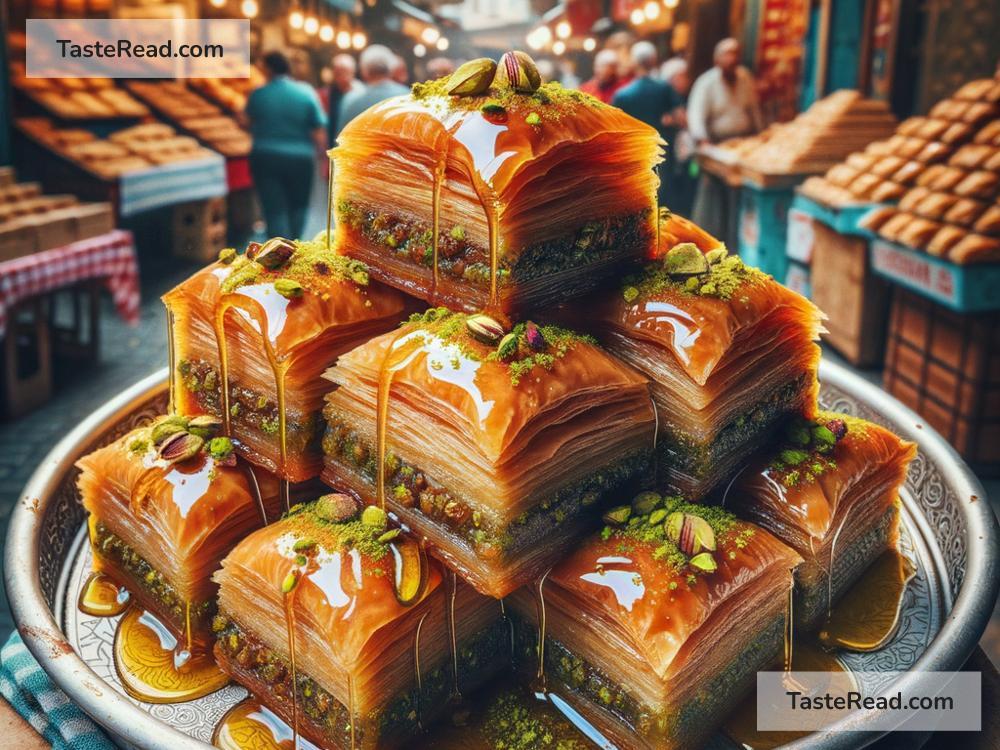Title: The Sweet Journey of Turkish Baklava: From Ancient Kitchens to Global Delight
Once upon a time, in the grand kitchens of Ottoman palaces, a sweet delicacy was born, embracing layers of thin pastry, filled with nuts and sweetened with syrup or honey. This delightful dessert known as Baklava has transcended its Turkish origins to become a symbol of sweet indulgence around the world. But how did Turkish Baklava achieve such fame and status? Let’s embark on a delicious journey through time to uncover the sweet saga of Baklava.
The Roots of Baklava
The story of Baklava dates back to the Ottoman Empire, flourishing around the 15th century, although its exact origins are a topic of culinary debate. Some food historians suggest that Baklava’s ancestors can be traced back to ancient Mesopotamia. However, it was under the Ottomans that Baklava evolved into the dessert we know and love today, with the empire’s chefs perfecting the recipe and turning it into a palatial treat.
A Dessert Fit for Sultans and Kings
Baklava was not just any dessert; it was a sweet luxury meant for the elite and royal gatherings. The perfection of Baklava was such that it was considered a symbol of wealth and status. Only the finest ingredients were used, and its preparation was an art in itself. The process of making Baklava became a treasured secret, passed down through generations within the confines of the palace kitchens.
Spreading Sweetness Beyond Borders
As the Ottoman Empire expanded, so did the fame of Baklava. It travelled across continents, morphing slightly with each new culture it touched. Countries within the former Ottoman territories, like Greece, Lebanon, and Syria, all have their unique version of Baklava, a testament to its adaptable and beloved nature.
Turkish Baklava Today
Today, Turkish Baklava stands distinct among its global cousins for its rich history, variety, and unwavering dedication to tradition. The classic version is a harmonious blend of thin, buttery layers of phyllo pastry, generously filled with ground pistachios, walnuts, or hazelnuts, and sweetened with syrup or honey. The secret to authentic Turkish Baklava lies not only in its ingredients but in the meticulous craft of its preparation.
A Feast for the Senses
What makes Turkish Baklava a symbol of sweet indulgence is not just its taste but the experience it offers. The sound of the crispy layers breaking under your fork, the sight of the glistening syrup-coated pieces, the smell of melted butter mixed with roasted nuts, and, finally, the divine taste that balances sweetness with the rich flavors of nuts. Eating Baklava is a journey for the senses, one that lingers in memory long after the last bite.
Sharing Sweetness: Baklava in Turkish Culture
In Turkey, Baklava is more than just a dessert; it’s a medium of hospitality, celebration, and tradition. It’s a common gift during religious festivals like Ramadan and Eid, a staple at weddings, and a warm way to welcome guests. The act of sharing Baklava is deeply ingrained in Turkish culture, symbolizing friendship, generosity, and joy.
The Global Journey
The global love for Baklava is a testament to its irresistible appeal. From specialty pastry shops in Istanbul to cafes in New York, Baklava has found its way into hearts and homes around the world. Its versatility has also inspired chefs globally to create fusion desserts, adding a modern twist to the traditional recipe. But no matter its form, the essence of Baklava—its rich history, cultural significance, and soul-satisfying sweetness—remains unchanged.
Conclusion
Turkish Baklava’s journey from the ancient kitchens of the Ottoman Empire to becoming a global symbol of sweet indulgence is a sweet story of culinary excellence, cultural exchange, and enduring tradition. It reminds us that some flavors are timeless, transcending borders and uniting people in shared moments of joy. So, the next time you indulge in a piece of Baklava, remember, you’re not just tasting a dessert; you’re savoring a piece of history, a morsel of joy, and a tradition that has been lovingly preserved through centuries.


